Region 4
Counties of Worth, Cerro Gordo, and Franklin Regional Director Donovan Olson
Iowa State University Extension and Outreach Rising Star Internship
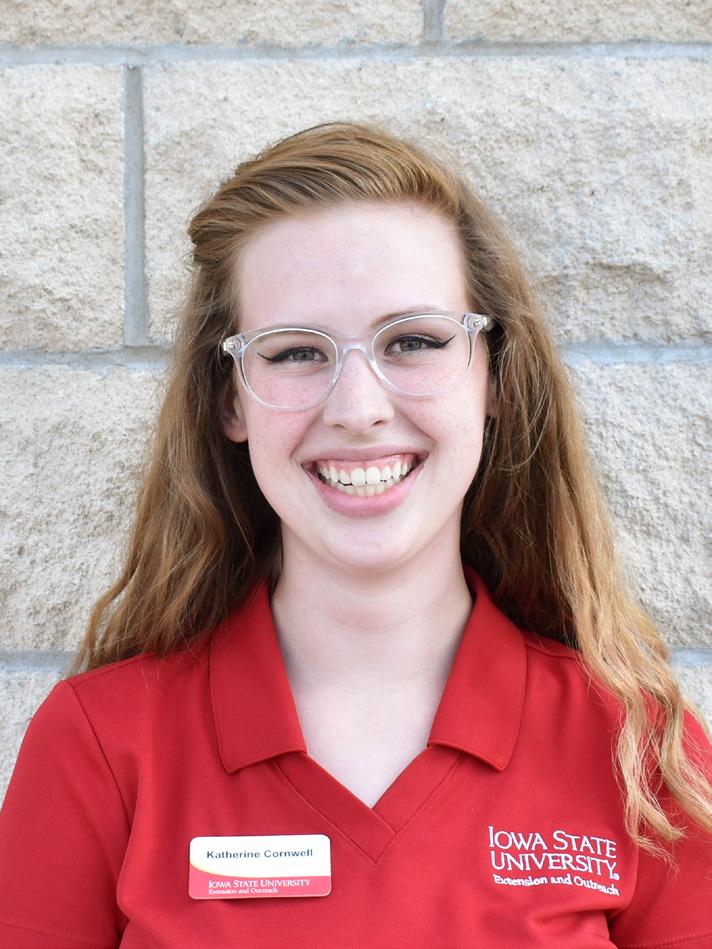
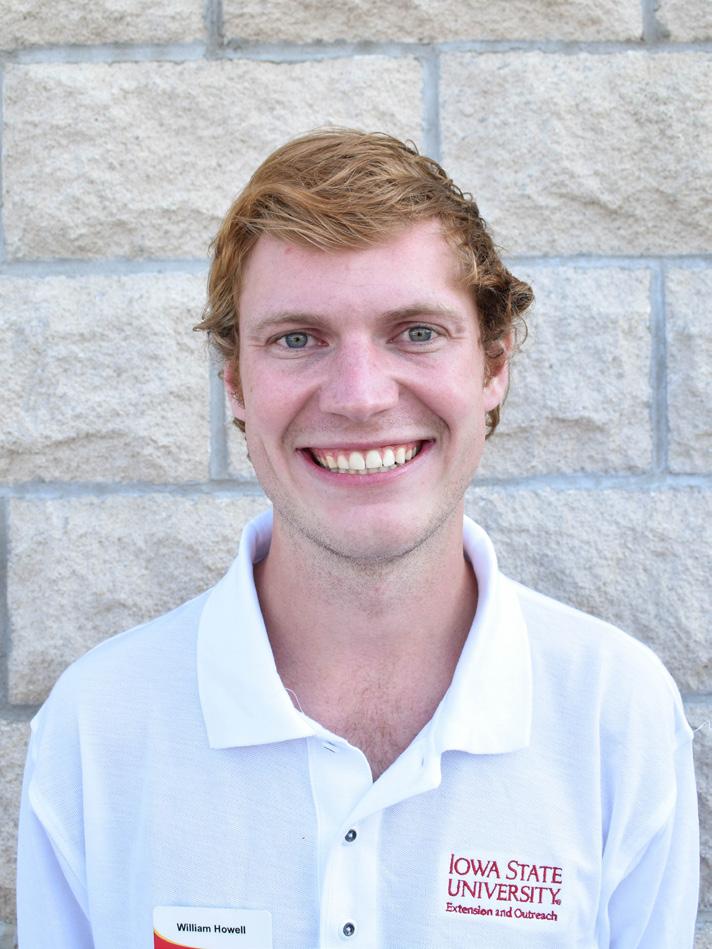
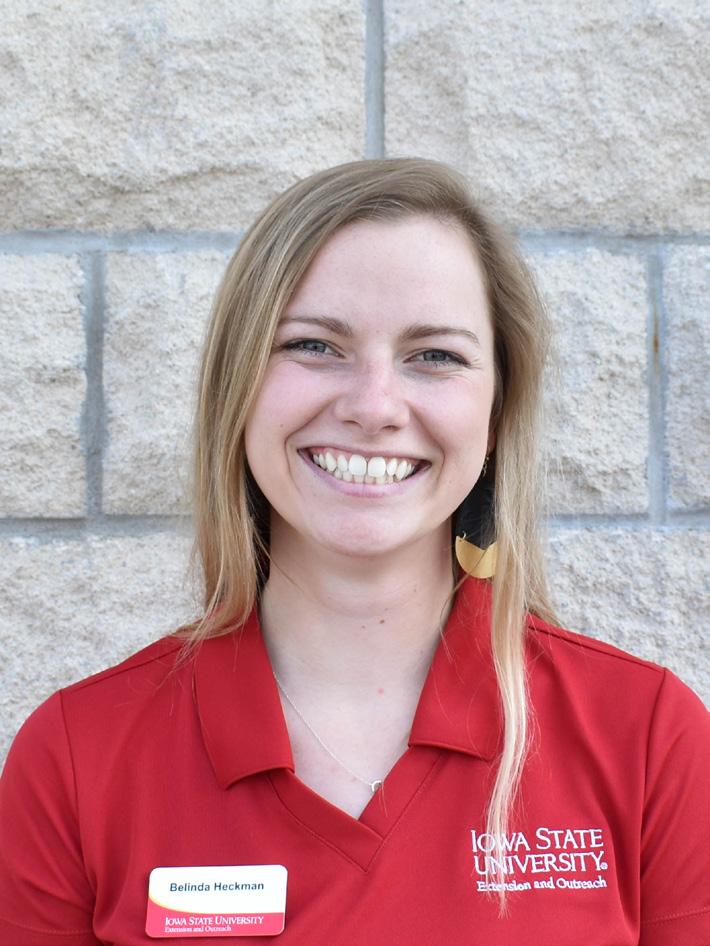
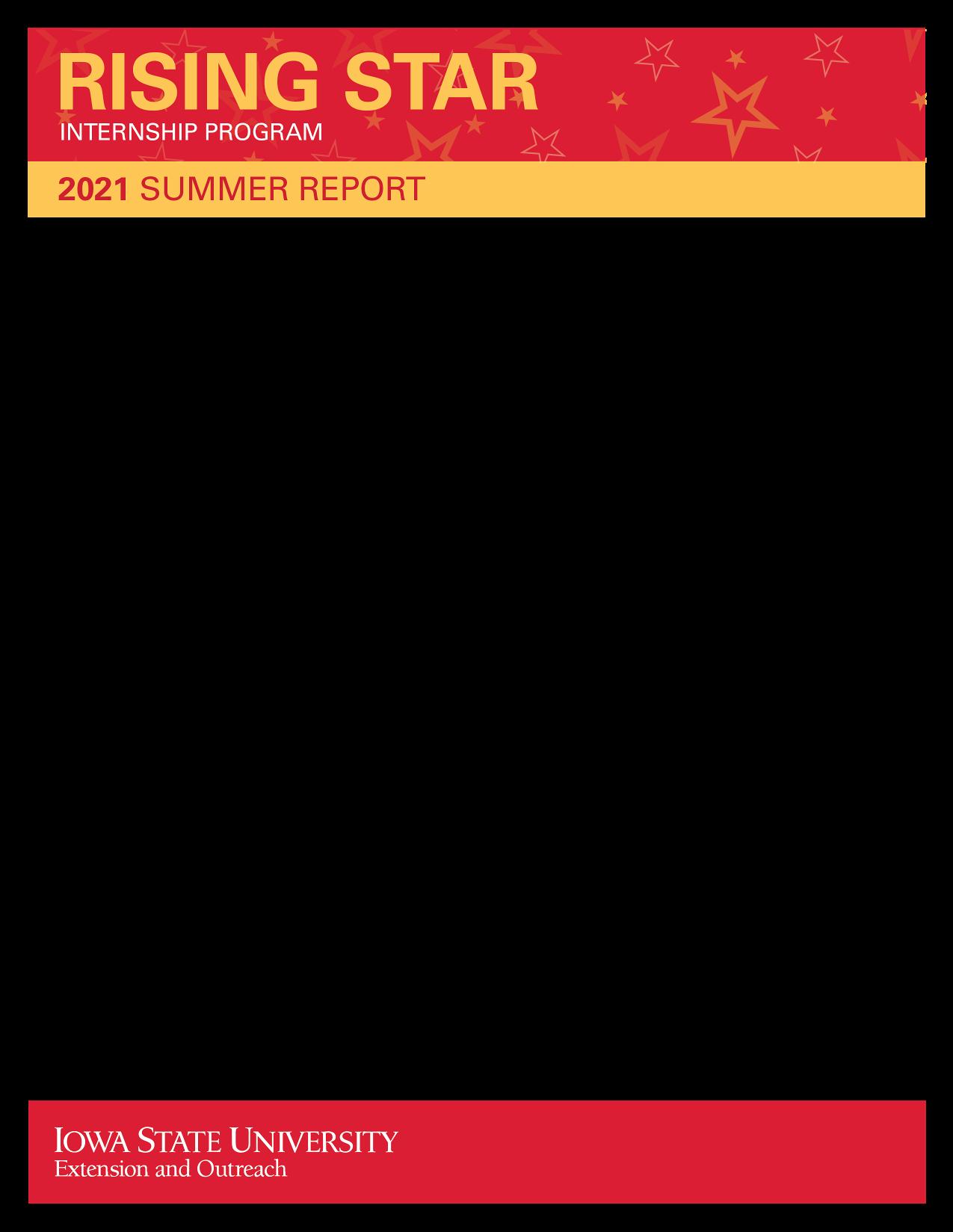
www.extension.iastate.edu/risingstar

Iowa State University Extension and Outreach Rising Star Internship




www.extension.iastate.edu/risingstar
Region 4 Rising Star Interns spent their summer based in Ames, Iowa and traveling between Worth, Cerro Gordo, and Franklin counties to gain an understanding of their community dynamics. From May 11 to August 5 the interns focused on implementation plans for four different local foods and community enrichment projects. The goal was to promote growth of established initiatives across rural northern Iowa. The valuable knowledge and experiences that were acquired throughout the summer are unmatched by other internships. The Rising Star Interns are prepared to continue building onto the skills developed this summer to prompt future endeavors. The interns would like to deeply thank all the individuals they worked with this summer for their support, generosity, kindness, and guidance. None of this work would have been possible without support from participating counties of Iowa State University Extension and Outreach and Ag Ventures Alliance.
Belinda Hoffman William Howell Kaylee Cornwell College of Agriculture and Life Sciences, Global Resource Systems and Dietetics West Liberty, Iowa College of Design, Architecture Chicago, Illinois College of Design, Graphic Design Bettendorf, IowaThe Rising Star Interns in Region 4 acted as consultants. For all the projects interns completed this summer, they followed a general structure: background research, problem identification, community assessments, plan development, and initial implementation. At the conclusion of the four projects, in-depth reports are submitted to respective counties that include helpful materials and recommendations for moving forward. Across the four projects, over 25 meetings and tours were attended to gain insight into the issues at hand and to provide updates for project development. All three county directors were contacted bi-weekly and were integral in the direction of the work. Working with 15+ community leaders this summer serves as evidence that these projects have the opportunity to leave a lasting impact when fully implemented.
This serves as a summary to the Region 4 comprehensive document.

Find comprehensive documents: https://www.extension.iastate.edu/ countyservices/rising-star-internship
Lincoln Intermediate in Mason City, Iowa had a phenomenal greenhouse constructed in 2017, but has yet to be used to its full potential. Throughout the last four years, various individuals and groups have used the greenhouse for projects such as plants for landscaping the school grounds, and club projects. In Fall 2019, the Green Thumb Club (a 4H club administered through Iowa State University Extension and Outreach [ISUEO]) began meeting in the greenhouse weekly to grow different types of plants and to learn about gardening.
The purpose of the project this summer was to work with students, faculty and staff to develop and institutionalize educational programs in growing foods at the greenhouse and expanding the school garden initiative. The Rising Star Interns developed an implementation plan for integrating the use of plant production into the 5th and 6th grade curriculum. Throughout the summer, the interns initiated the use of the hydroponics system, developed lesson plans, and worked to create a sustainable growth & maintenance plan for the greenhouse, which was the biggest challenge faced with this project.
Administrative support in regard to integrating the use of the greenhouse into classroom curriculum has varied throughout the last four years. There is no agriculture education program in the school district and teacher involvement has been limited to this point. However, Teresa Schlichting, Lincoln Intermediate’s Principal, shared her desires in relation to the growth of the greenhouse in upcoming years, including:
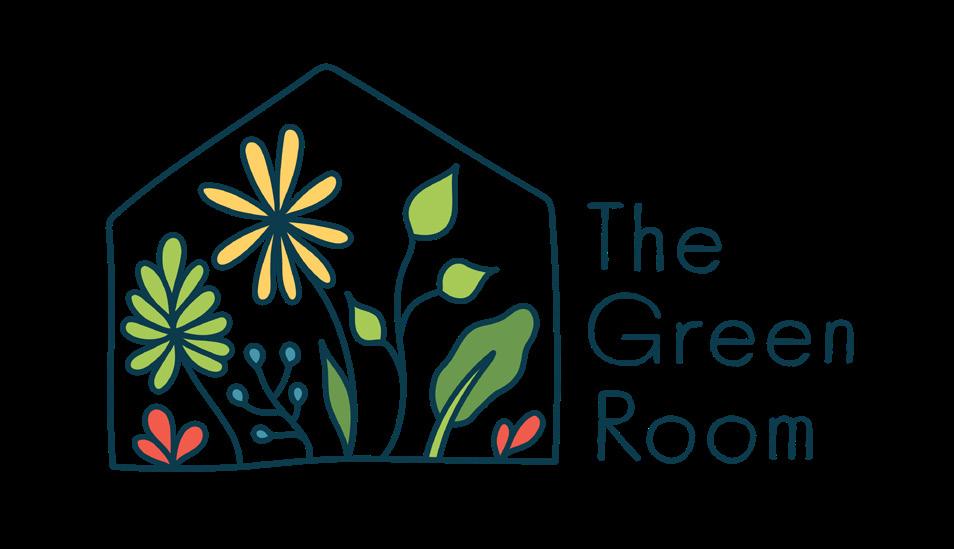
• All students in the greenhouse within the first week of school.
• Teachers that are willing to work in the greenhouse throughout the academic year.
• Food grown in the greenhouse be supplemented into school lunch.
An anonymous survey was created with the intent to distribute amongst Lincoln Intermediate faculty and staff (via Qualtrics) to collect feedback. The survey was designed to establish the objectives and deliverables that would be beneficial to provide at the end of the summer. However, many of the faculty were gone for the summer and administration was hiring a few new teachers throughout the majority of June. For this reason, Sarah DeBour has been granted access to the survey and will distribute the survey upon request in the future. We used feedback from conversations with a select teacher committee and Teresa Schlichting to guide the direction of our project goals and objectives.
For large scale horticulture and floriculture production during the next academic year.
Develop an Action Plan
With recommendations to implement projects and lessons into classroom curriculum.
Harvest Options and Sustainability
Use plants and produce grown around the district and invite community members to partake in experiences.
To prepare the greenhouse for use, interns organized the materials to create a more inviting environment through general cleaning, taking inventory, creating a classroom layout, and hanging visuals for general guidance. Additionally, we thought that it would be beneficial to arrange the long tables in a lab style. For future expansions, it would be useful to add additional tables to meet the needs of the number of students working in the space at one time.
One of the major greenhouse preparations was setting up an 84-plant hydroponics table that is roughly 8 feet by 12 feet long. It is a system that was sitting idle and is now ready for use and has the capacity to produce plants every 12-weeks for the entire year.
Developing an Action Plan
In essence, this project was designed to equip the beginning endeavors in greenhouse production at Lincoln Intermediate. Materials that have been prepared as a guide to start with are:
Signage for the Space
• Welcome poster with general rules
• Plant identification cards with general information
• Project timelines to aid in planning
• Templates of the signage listed above for future development
• Step by step guides for projects
• Standard operating procedures for hydroponics
• General budgets (to gauge general cost, not definite)
• Identification of curriculum and lesson plans
• Templates of guides listed above for future projects and record keeping
Materials continued on the next page.
These are general steps for an action plan that teachers can follow when choosing to try something new with their classroom this upcoming year.
9 Identify operation possibilities
9 Choose a project to complete
9 Set goals for the project

9 Decide on the timeline (when you would like to harvest and then work backwards)
9 Select coordinating curriculum
9 Plan lessons throughout the growing seasons
9 Complete the project
9 Reflect on the project
Harvest Options and Sustainability
With anticipated increase in output, interns suggest a distribution plan is developed. Interns brainstormed a few suggestions of what would work well for distributing the plants and produce.
School Lunch or Donations
In order to donate the food grown, there are a few federally required food safety standards. The required standards are: the list of standards, frequencies, and descriptions below are all taken from the Food Safety Modernization Act.¹
Annual Plant Sale
Having an annual plant sale would require more research and growing more plants, but would be a great opportunity. Students could set long term goals of what they want to sell, measure them mathematically by whether they were met, and learn project management skills. Here is a complete manual to host a school plant sale from ISU to get you started: Complete plant sale manual.²
Delivery Method of Materials
• Google Docs

• Physical copies
Resource Guides
• Two manuals other schools have used
• Food Safety Modernization Act Guide
• Customized beginners guide for Lincoln Intermediate
Branding
Brand the market and create intuitive templates for all users.
Pick a Better Snack
Iowa Department of Public Health initiated a “pick a better snack” program that incorporates fruits and vegetables into the classroom. It was originally designed for younger children, but a lot of the lessons can be adapted to meet any classroom needs. Educator lessons and suggested schedules are listed in this resource: Educator Lessons.³
Moving forward, this greenhouse has so much potential for growth and involvement. As a team, the interns identified three key areas of focus when utilizing the space.
Personnel Commitments
An internal committee working together to maintain logistics and plans for the space will alleviate the weight of the to-do list falling on a single person and increase overall ownership.
Community Involvement
Calling on experts in the subject (i.e. Master Gardeners and ISUEO Specialists) will lead to a fruitful experience and promote personal connections that can lead to success of the space.
Strengthen Administration
Record keeping and communication are imperative to keep the use of the greenhouse steady. This will make the transition easier from year to year, and promote more comfort with the systems.
Hampton Iowa’s local farmers’ market has been a part of the community for several years. The farmers’ market has been looking to increase involvement with the market by trying to increase the number of vendors and customers. Efforts have been made to increase awareness of the market through the social media platform Facebook. To increase awareness, their goal is to create an identity for the farmers’ market and an in-depth marketing plan to reach more people in the community.
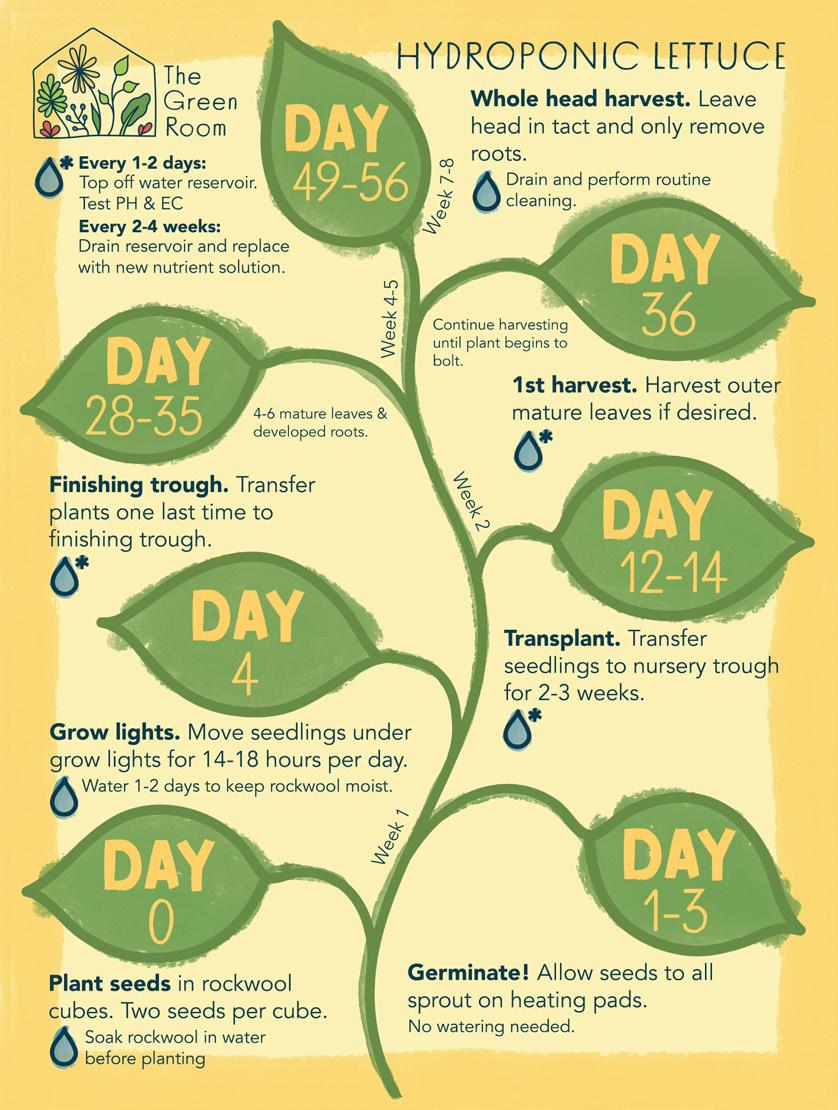
Create a marketing plan to use for this season and future seasons.
Marketing Sustainability
Develop a plan for long-term marketing sustainability.
One of the Hampton Farmers’ Market’s central objectives is to add more vendors to the market. They have struggled with this goal. Many vendors outside of produce do not find success. Their hope is to promote the market to gain new customers and from that growth, gain more vendors. In order to build a successful market their social media promotion must reflect the heart of the market which is fresh, local, and high-quality food with a team of knowledgeable and friendly vendors. These ideals were kept in mind throughout the project.
•
Throughout the summer, the Rising Star Interns helped the farmers’ market through delivering a sustainable plan to make consistent use of their social media accounts while maintaining a new branded identity. This plan included creating easy-to-use graphics for social media use, developing an intern position in order to maintain this presence online, collecting statistics of the accounts, and making suggestions for attracting the attention of young families in the community.
Throughout the summer the interns met with individuals involved with the market to better understand their vision of the market’s potential and what the values of the market are. Between the six meetings with these individuals, they gained an understanding of what they were envisioning and began taking steps to see that vision come to fruition.
In order to comprehend the previous marketing initiatives, analytics of the last three years of Facebook utilization were collected. The Hampton Farmers’ Market had been utilizing Facebook for their promotional needs since 2016. The interns focused on the most recent data from 2019 to the beginning of 2021. The data indicated several spikes in activity due to an irregular posting schedule which was partially affected by COVID-19.
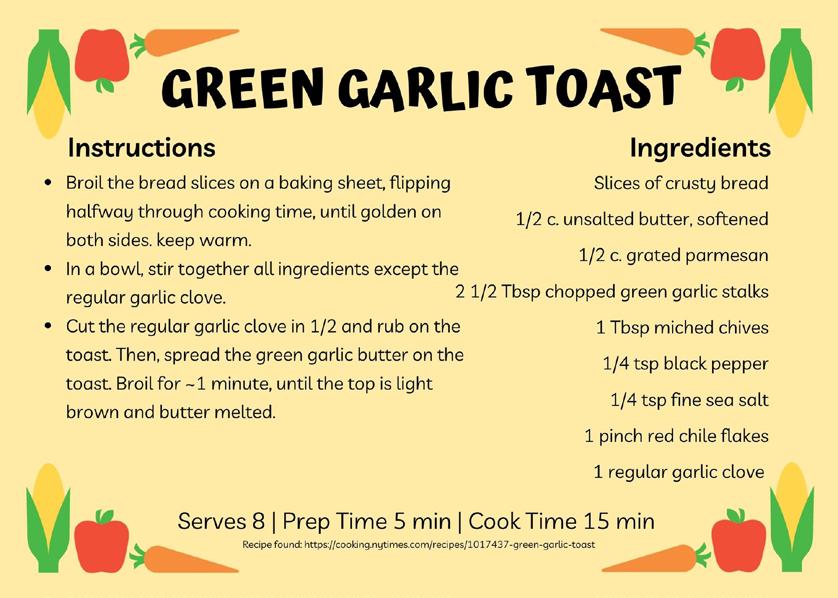
•
•
•
•
•
•
•
• Brand
•
• Ko-Fi Account

• Linktree Account
• QR Code Fliers
• New Instagram Account
•
The purpose of branding is to show who you are. So, the first task of the Rising Star Interns was to develop a branded identity for the Hampton Farmers’ Market. In order to create a brand that represents the market’s values and identity, several meetings were conducted. The interns also researched how other farmers’ markets across the United States have branded themselves. From this research, the interns decided the following materials would be appropriate. (See left)
Marketing is used to tell the world who you are. The Hampton Farmers’ Market’s previous marketing included some posting on Facebook, radio advertising, and an ad within a local booklet. These previous efforts revealed an opportunity to improve their online presence. Opportunities for improvement include a marketing plan for Facebook and Instagram that focuses on frequent and consistent posting, a better utilization of hashtags, and captions that invite audience interaction. Additional materials include an account to invite online donations such as Ko-Fi, a Linktree for all links to be centralized, and QR codes available in-person to make finding these accounts simpler.
In order to make social media posting simple, the interns created materials and researched applications that allow posts to be automated.
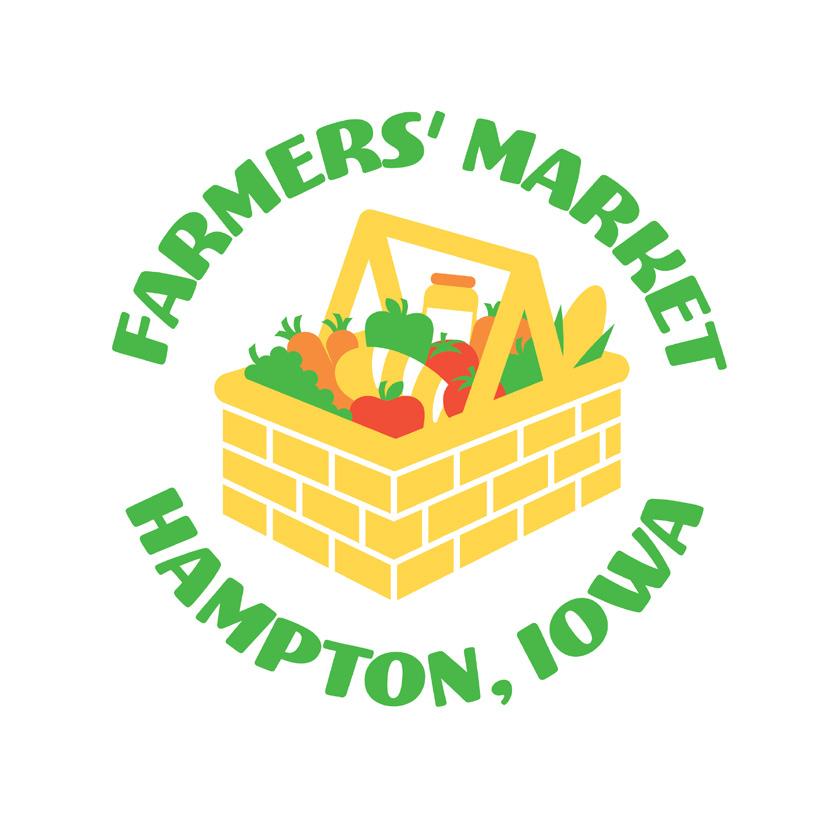
The best option for the market is automatic posting through the Facebook Business Suite. This service includes free scheduled posting. A video tutorial will be provided.
To make posting simpler to users with little experience, a Do and Don’t guide was created to explain social media etiquette and provide the best hashtags for the Hampton Farmers’ Market’s social media pages. A caption prompt document was created as well. This document has ready-to-use captions for all existing images that can be used for easy posting and to reference for future posts.
It is important to collect data to determine progress. To track all the current and future progress, the interns researched the simplest way to collect analytics. Analytics can be located through Facebook and Instagram’s built-in analytics tab. This automatic feature is very efficient because the data does not need to be collected by hand and it can be accessed anytime inside each platform.
Interns recommend the Farmers’ Market hire an intern to maintain their social media presence. This position would take pressure off the vendors and would give an exciting opportunity to a student. The interns wrote an internship job description to hire a future high school student to fulfill this role.

Develop Develop structured master gardener volunteer opportunities through job descriptions.

Distribute Suggest
Distribute written volunteer opportunities to appropriate communities.
Provide suggestions for continuation of project advancement and sustainability.
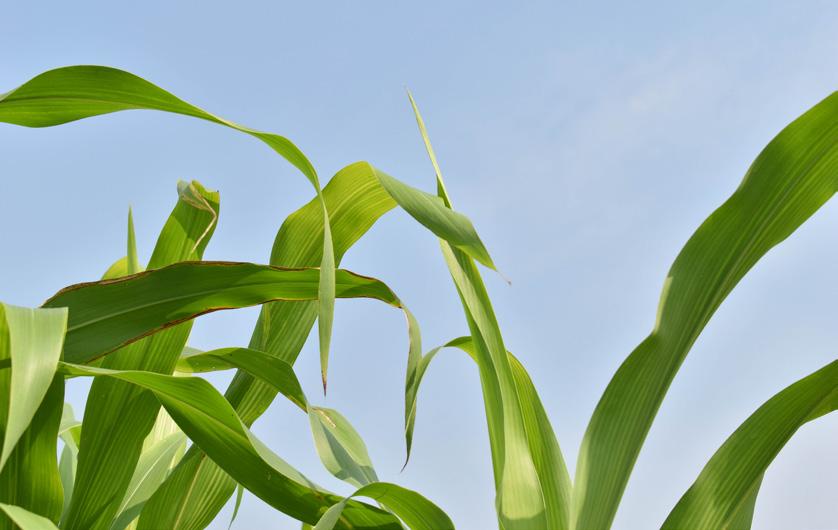
There are community gardens in all three counties that interns served this summer. The gardens vary in size, scale, and meet different community needs. The unifying factor amongst them is that they would all benefit from expansion and volunteer involvement. The three gardens have a variety of opportunities that would benefit from Master Gardener involvement and would provide the Master Gardeners with structured volunteer opportunities once they complete their training.
Interns utilized a survey, several tours, and individual feedback from leadership. These elements laid the foundation for the objectives of this project plan.
In order to gain a better understanding of the public perception regarding community garden expansion, the interns administered a 17 question survey that was distributed during the Worth County Fair. The survey focused on feedback regarding potential involvement of the Master Gardeners program in community gardens. Although this

Mason City and Clear Lake, Iowa
• Greenhouse daily maintenance assistant

• Greenhouse teaching workshop
Northwood, Iowa
• Worth County Fairgrounds beautification
• 4H fairground plant bed assistant
• Butterfly garden maintenance
Clear Lake, Iowa
• Central Gardens planting planner
• Central Gardens maintenance
survey was initially distributed in Northwood, IA, it could also be utilized in other Iowa counties looking to expand their community gardens or Master Gardener programs. The survey focused on specific elements that we determined to be necessary in order to facilitate a successful community garden.
The demographic of 15 individuals who responded to the survey appeared to be consistent among their answers. We found that those who were most interested tended to be women above the age of 40, who were looking to dedicate one to two hours a week to gardening. We also learned that the longer travel distance to the garden strongly decreased interest in participating.
The interns visited the Mason City community gardens, Clear Lake Central Gardens of North Iowa, and the Northwood community gardens. During the tours, they were able to converse with growers and leadership from each garden. These conversations allowed the interns to discover how theses gardens are operated, what their primary functions are, and how they would like to see the garden expand and evolve into the future.
Master Gardener Overview
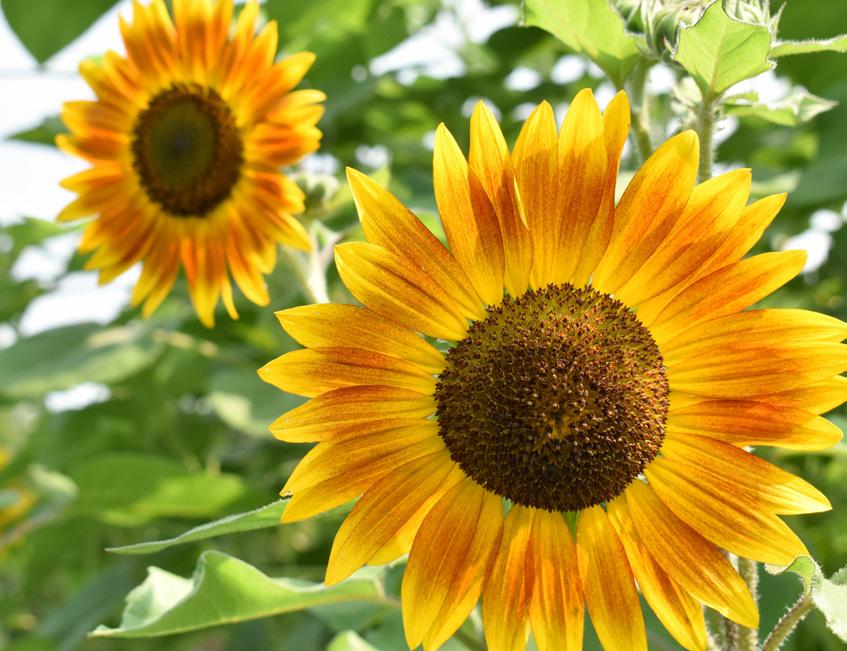
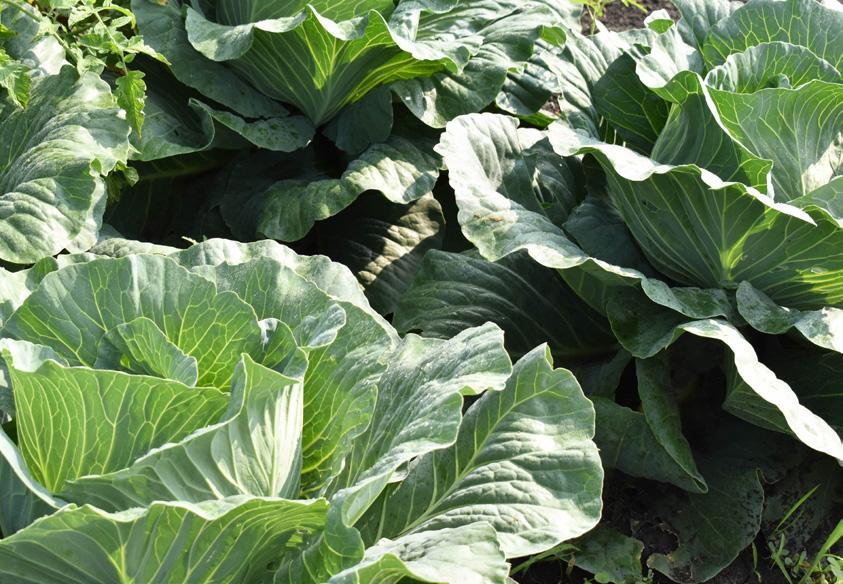
Regional Director, Donovan Olson, also shared ample amounts of information in regard to Master Gardeners (MG). MG is a program administered through ISUEO that includes many hours of educational workshops and lessons. After completing the training, new members are expected to complete 40 volunteer and continued education hours within their first year of service. One identified issue is that Master Gardeners go through the program and then are left on their own to identify volunteer projects, without clearly defined opportunities. This effort will assist Master Gardeners in achieving their community service hours.
The interns brainstormed about ten volunteer descriptions for the three counties they worked with based on community need and the function of community gardens. In Mason City and Clear Lake, two opportunities were established in part with the greenhouse. In Northwood, three opportunities were identified relating the Worth County Fairgrounds. These descriptions include the responsibilities, time commitment, project description, and sign-up information. It is the goal that the opportunities will be distributed through sign-up genius via email on a regular basis. For those who may not use technology, they are welcome to stop in the county extension offices to find these opportunities and sign-up.
Concept
Create a final design that incorporates:
• Outdoor seating for local restaurants
• A covered pavilion to provide shade
• The ability to be locked and secured after dusk
• Low maintenance design
• Utilizes bricks recovered from the façade of the original structure that once stood on the site.
• Accessibility to all people, meeting all ADA requirements
• An area for instillations by local artists
Proposal
Create a final design concept and proposal that can be submitted to a local design/build firm.
Renderings
Design a series of architectural renderings that can provide the community with visualizations of what will be constructed.

Distribute Through Extension Offices (in-person and virtually)
Having sign-ups readily available to Master Gardeners in the county extension offices will increase the number of interactions between the two parties. Additionally, it will provide an easily accessible way to sign up and ask clarifying questions to program coordinators.
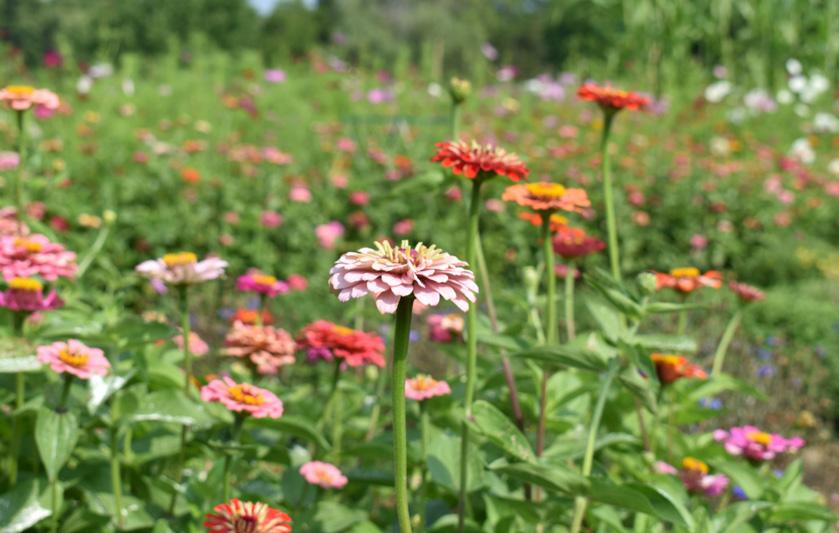
Monthly emails will increase engagement and produce an inviting environment. Additionally, this will lead to stronger relationships and a greater understanding of the program as a whole.
Annual Recruitment Activities (i.e. Fair Booths)
Completing this project will identify more gardeners, increase retention, and stand as an attraction to the program as opportunities continue to be developed. If an attempt is made to do recruitment activities throughout the year, it is more likely that the project will be successful.
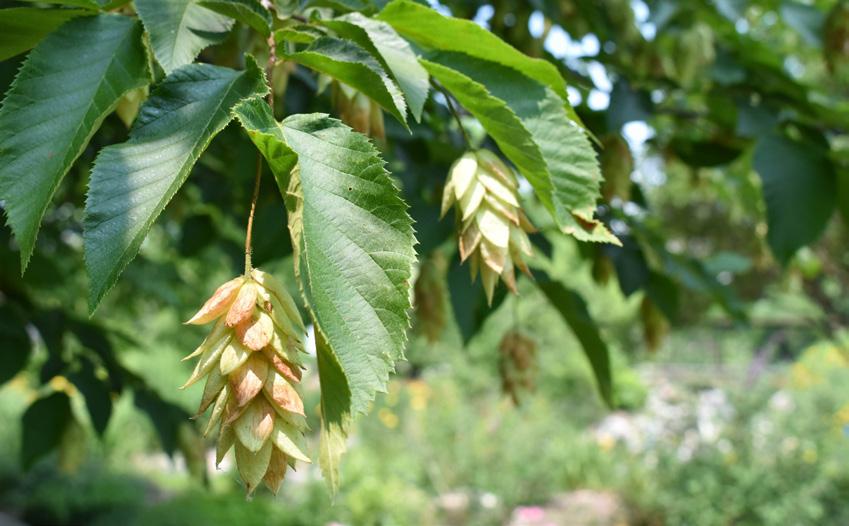
One challenge that leads to less retention in the program is difficulty submitting hours physically. Some Master Gardeners are not proficient with computers. The interns recommend that county extension offices be open to submitting hours for these individuals if they submit a physical copy of their hours.
A vacant lot located in downtown Hampton, Iowa has been purchased in order to be developed into a public park. A local donor is financing the project, and the name “Peace Plaza” was decided. The Rising Star Interns were tasked with creating design concepts that would be presented to the donor, chamber of commerce, as well as other local parties. Once agreed upon, a final concept would be submitted to a local design/contracting firm. This park will serve as outdoor seating for local restaurants, as well as provide a pavilion for events.
To gather information and gain an understanding of public perception surrounding the project, meetings were held with the donor as well as the local chamber of commerce. A series of design concepts were presented by the interns in order to refine potential elements into one final design concept. Each meeting allowed for open conversation as well as suggestions on how to further refine the design concepts into one final park design proposal.
A series of 25 final renderings were created to allow the community to visualize what will be constructed on the site in the coming months.

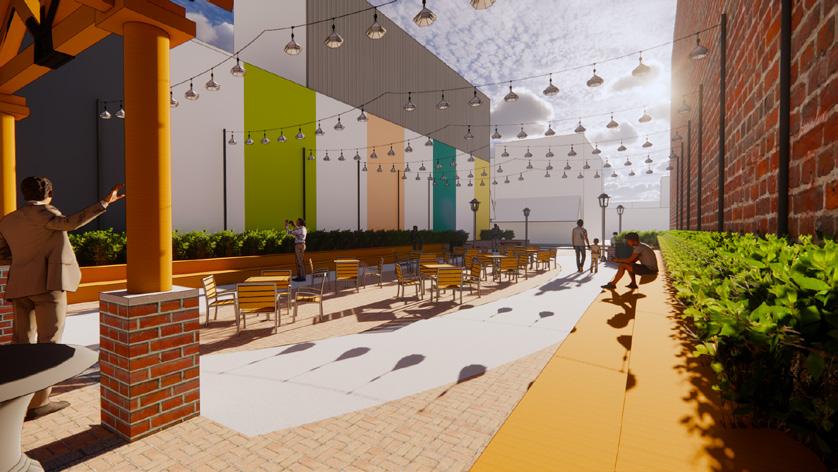

The interns created a series of promotion media using the final renderings. This includes a brochure, a promotional PowerPoint, and a display sign. These materials will be distributed to local businesses, as well as the community at large.
Interns attended a Quarterly Coffee meeting in order to gain an understanding of the local culture, as well as gain an understanding of what elements should be incorporated into the design concept.
Existing local structures were examined to determine a final pavilion that would seamlessly blend with the surrounding buildings.
It was determined that the park would be utilized by local restaurants, so a series of seating installations were designed to be integrated into the overall park design. The placement of these seats has allowed the space to not only function as outdoor seating but to also be a flexible space for other uses.
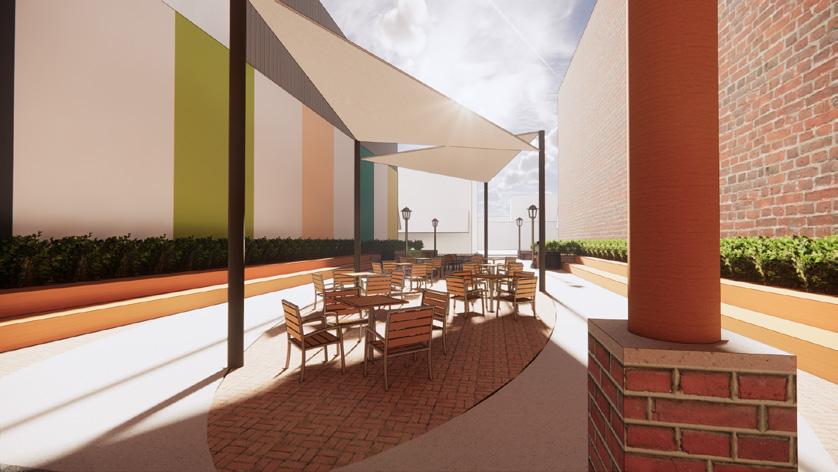
A concern of the donor and the Chamber of Commerce was safety and security. The group desired some form of surveillance. The interns researched several solutions and found the most ideal solution to be solar-powered security cameras.
The committee expressed a want for local art in the park. So, a series of artboards will be installed throughout the park. These boards can be removed so artists can easily paint these boards, and they can be replaced over time.
To make a more comfortable space, the park will contain a shading pavilion. The park will also have mounting posts for additional shading “sails” that can be installed during the summer months.
Finally, bricks from the façade of the original building have been recovered from another site in Hampton. These bricks will be used to construct features throughout the space, such as the fireplace located in the pavilion.

The utilization of local design/contracting firm to construct this project. This will create a relationship between a firm and the Hampton community and lead to the park that was initially visualized.
Hire a licensed structural engineer to survey the site and determine the maximum construction loads that can be placed on the site to ensure structurally a sound construction process.
Create a plan of how and who will maintain the park space, such as routine cleaning and upkeep.
¹ Food Safety Modernization Act is a series of regulations that focuses of the prevention of food contamination.
² The complete school plant sale manual from Iowa State University can be found at: https://lib.dr.iastate.edu/cgi/viewcontent.cgi? article=1648&context=creativecomponents
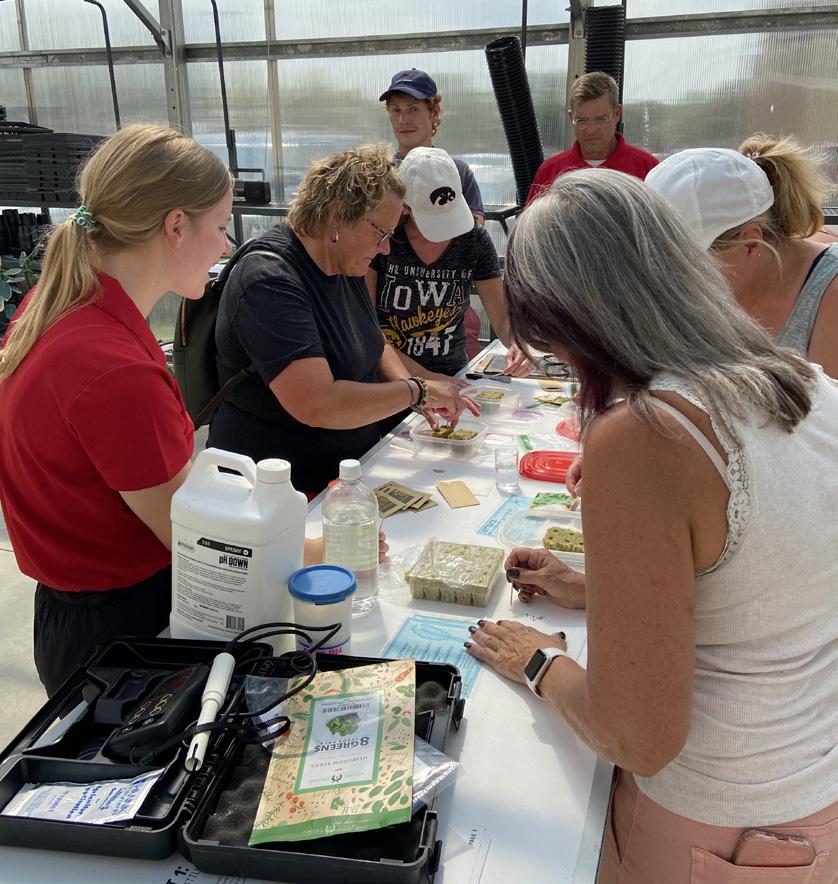
³ Suggested schedules and educator lessons can be found at: https://idph.iowa.gov/inn/ pick-a-better-snack/educator-lessons
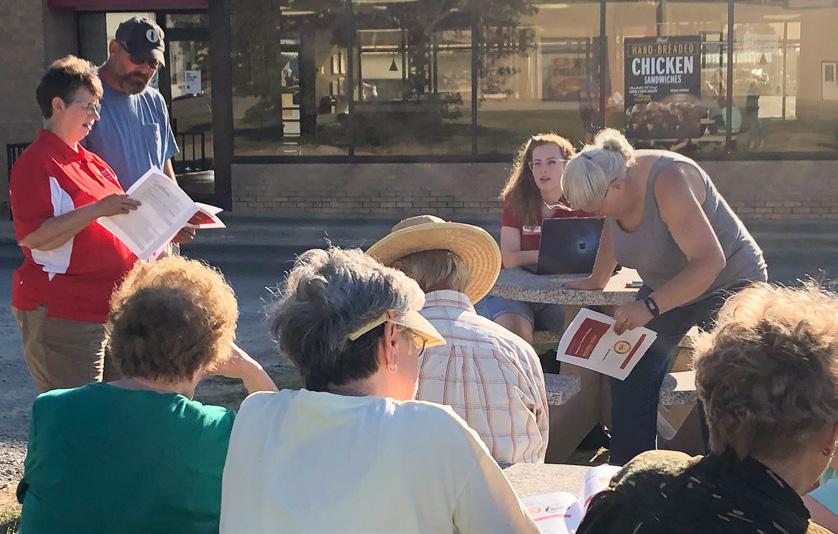
The Rising Star Interns are incredibly thankful to have had the opportunity to be a part of such a unique internship experience that is like no other. Learning about the different communities, getting to know community members and leaders, and working together to tackle these projects has been so fulfilling and fun. The Rising Star Internship has left the interns with a variety of new skills and experiences that has led to an unforgettable summer. Belinda, Will, and Kaylee all extend a huge thank you to all the individuals who displayed so much support, generosity, kindness, and guidance throughout this experience.
documents: https://www.extension.iastate.edu/countyservices /rising-star-internship
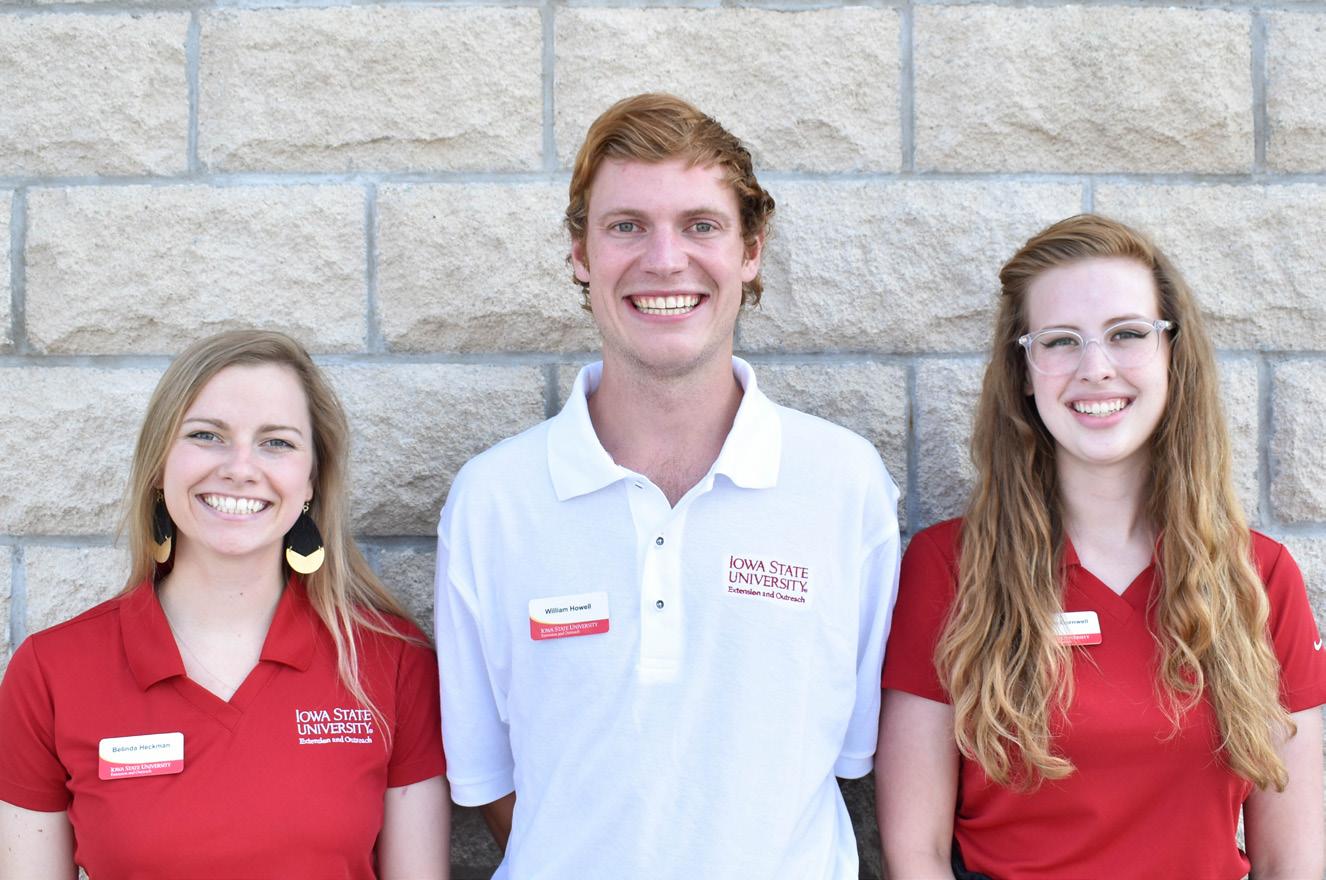
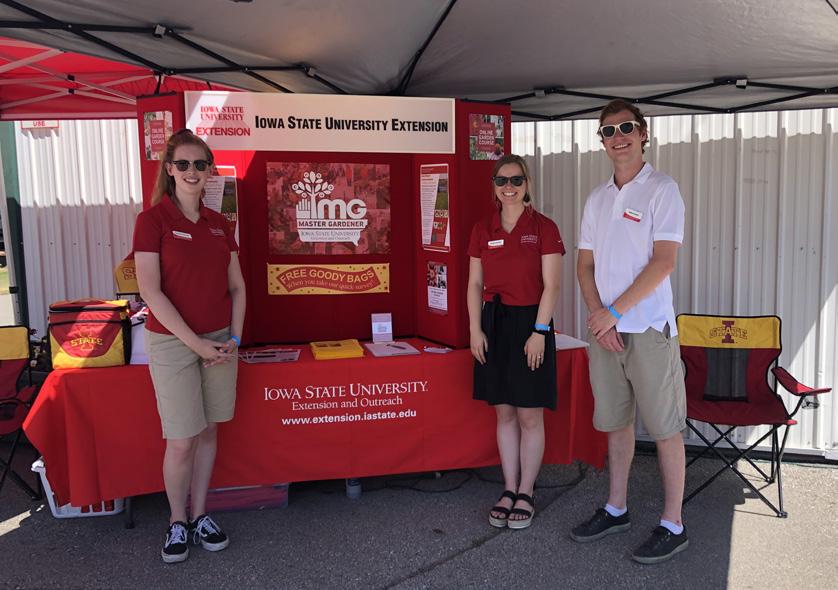

Find
2150 Beardshear Hall, Ames, IA 50011-2031 (800) 262-3804
www.extension.iastate.edu/risingstar
This institution is an equal opportunity provider. For the full non-discrimination statement or accommodation inquiries, go to www.extension.iastate.edu/diversity/ext. ADV.21.04C. May 2021